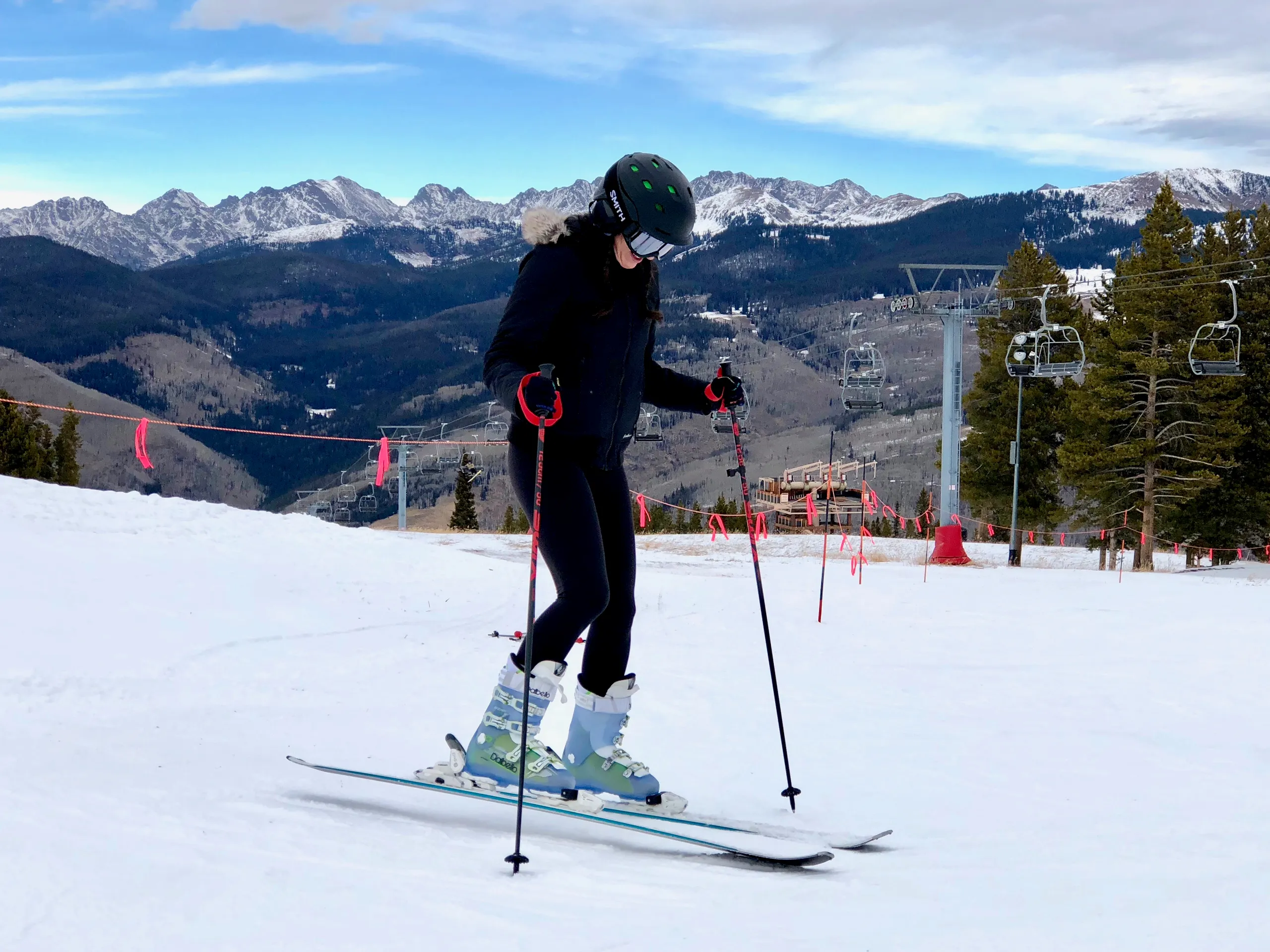Imagine crisp mountain air whipping through your hair, the sun kissing your cheeks, and the exhilarating rush of snow spraying beneath your skis as you carve down a pristine slope. It’s not just a scene from a winter postcard – it’s the magic of skiing, a sport that combines breathtaking thrills with unexpected physical benefits.
But beyond the adrenaline rush and jaw-dropping scenery, does skiing qualify as a bona fide workout? Can this beloved winter pastime become a cornerstone of your fitness routine? In this article, we will find out the question of whether skiing is a good form of exercise and explore the numerous advantages it brings to your overall fitness.
Contents [hide]
Is Skiing Good Exercise?

Skiing is not just a fun winter activity; it’s also an excellent form of exercise. As an experienced fitness trainer, I can confidently say that skiing offers a wide range of benefits for your overall health and fitness.
It engages various muscle groups, promotes endurance, and offers a refreshing way to stay active during the winter months. Whether you’re a seasoned enthusiast or a novice hitting the slopes, skiing provides a fun and effective workout for overall fitness.
Benefits of Skiing as Exercise:
Here are some of the key benefits of skiing as exercise:
- Cardiovascular Endurance: Skiing involves continuous movement, which helps improve your cardiovascular fitness and stamina. The combination of uphill ascents and downhill runs challenges your cardiovascular system, resulting in increased heart rate and oxygen consumption. Regular skiing can enhance your cardio output and oxygen capacity.
- Muscle Strength: Skiing is a full-body workout that engages multiple muscle groups simultaneously. From your legs and core to your arms and shoulders, skiing uses various muscles to maintain balance, make turns, and propel yourself forward. This dynamic movement helps build strength and muscular endurance.
- Improved Balance and Coordination: The nature of skiing requires a high level of balance and coordination. As you navigate the slopes, you develop better kinesthetic sense, body awareness, and overall balance. These improvements not only enhance your skiing abilities but also carry over to your daily life, reducing the risk of falls and improving movement stability.
- Low-Impact Exercise: Unlike high-impact activities like running, skiing is classified as a low-impact exercise. The smooth gliding motion reduces stress on your joints and bones, making it suitable for individuals with arthritis or joint surface defects. Skiing provides a challenging workout without putting excessive strain on your body.
- Mental Well-being: Skiing is not just a physical activity; it’s also mentally stimulating. The beautiful scenery, fresh air, and adrenaline rush can have positive effects on your mood and overall well-being. Skiing allows you to disconnect from daily stressors and immerse yourself in the present moment, promoting mental relaxation and a sense of rejuvenation.
Which Type of Skiing Gives You the Best Workout?

When it comes to skiing, various types offer a great workout. Let’s take a closer look at the different types of skiing and how they compare to one another.
1. Downhill Skiing:
Downhill skiing, also known as alpine skiing, involves skiing downhill on groomed slopes or through moguls. This type of skiing is high-intensity and requires significant skill and control. It engages the major muscles in your legs, including the quadriceps, hamstrings, and glutes, providing a challenging lower-body workout.
2. Cross-Country Skiing:
Cross-country skiing, also called Nordic skiing, involves skiing on flat or gently rolling terrain. It requires continuous movement and engages both the upper and lower body. Cross-country skiing is a fantastic cardiovascular workout that targets the muscles in your legs, arms, and core. It challenges your endurance and helps improve your overall stamina.
3. Backcountry Skiing:
Backcountry skiing takes you off the beaten path and into ungroomed terrain. This type of skiing is more physically demanding as you navigate through deeper snow, steep slopes, and challenging terrain. Backcountry skiing requires excellent balance, agility, and endurance. It engages your leg muscles, particularly the quadriceps, hamstrings, and glutes, as you make your way through the varied terrain.

Which Muscles Does Skiing Work?
Here are the main muscle groups that skiing works:
- Leg Muscles: Skiing primarily targets your leg muscles, including the quadriceps, hamstrings, glutes, and calf muscles. As you carve your way down the mountain, your knees and ankles endure the tension and weight of your body, strengthening both your joints and bones. This helps keep you strong and nimble, even as you age.
- Core Muscles: While downhill skiing mainly focuses on leg muscles, it also engages the core muscles to maintain stability and balance. These include the abdominal muscles, lower back muscles, and obliques. A strong core is essential for maintaining proper form and control while skiing downhill.
- Upper Body Muscles: Although downhill skiing doesn’t heavily rely on upper body strength, your arms and shoulders still play a role in maintaining balance and stability. When using poles to propel yourself forward or for balance, you engage the muscles in your arms, shoulders, and upper back.
- Feet and Ankle Muscles: Skiing requires constant adjustments and movements in your feet and ankles, which help control your skis and maintain balance. These smaller muscle groups in your feet and ankles work throughout your ski session, providing strength, stability, and control.
Frequently Asked Questions:
How many days a week should I ski?
On average, 4 days in a row is the limit, as fatigue within the muscles will decrease the quality of skiing.
Is skiing a good way to lose weight?
Yes, skiing and snowboarding are great cardiovascular exercises that can help burn calories and aid in weight loss.
Is skiing bad for a bad back?
If you have a spinal problem like osteoarthritis or degenerative disc disease, skiing may worsen your symptoms by putting stress on the vertebral discs, joints, and muscles.

Hello, I’m Ravindra. Over the years, I’ve immersed myself deeply into the world of fitness and health, transforming both my body and mind. Writing has allowed me to share my journey, insights, and expertise with those just starting out and seasoned fitness enthusiasts alike. Beyond just routines and diets, I believe in inspiring others to adopt a holistic approach to well-being.
